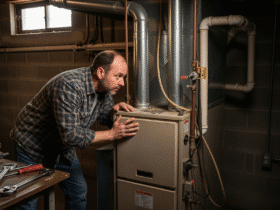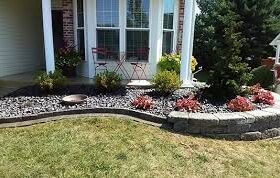Key Takeaways
- Fuel modification involves strategic landscaping and maintenance to minimize wildfire risks near structures.
- Wildfires are increasingly common, making proactive planning essential for residential safety.
- Local requirements and fire-resistant design elements can help homeowners and builders protect properties more effectively.
- Community involvement and education are key in reducing wildfire spread and damage.
- Emerging research highlights how using defensible space and fire-resistant plants significantly lowers home vulnerability.
- Case studies across different regions demonstrate the value of fuel modification in disaster-prone areas.
What Is Fuel Modification?
With wildfires threatening more communities each year, the need for practical defense strategies is vital. Fuel modification stands out among protective measures, encouraging intentional design and landscaping to eliminate, space out, or manage any flammable materials in the immediate area around buildings. Instead of treating each wildfire as an isolated incident, fuel modification asks that homes and landscapes be treated as a unified system that can slow or even stop a blaze’s progress. This approach makes properties safer, more resilient, and adaptable to changing conditions.
Fuel modification doesn’t call for the removal of every tree or shrub. It is about strategically developing defensible space—buffer zones designed to slow advancing fire, facilitate firefighter access, and protect vulnerable structures. These buffer zones include carefully chosen plants, trimmed regularly, with hardscaping features like pathways or gravel borders interrupting the fire’s spread. If you want to learn more about comprehensive strategies, fire-resistant home design strategies are an excellent starting point, providing actionable guidance that blends modern architecture and thoughtful landscaping to form a defensive perimeter. The evidence shows that customized plans make survival more likely and help homes recover more rapidly in the aftermath.
The Rising Threat of Wildfires
Wildfires have historically been a seasonal hazard in certain parts of the world, but today, they pose a year-round threat to many communities. Extended droughts, shifting weather patterns, and an increasing wildland-urban interface have all created an environment where fires can ignite and spread with little warning. The National Interagency Fire Center reports that wildfires now burn millions of acres annually, destroying thousands of homes and disrupting entire communities. As global temperatures rise, it is expected that the length and severity of wildfire seasons will only continue to increase. This demands that homeowners, architects, and governments embrace more robust and proactive mitigation strategies rather than rely solely on emergency response.
Fuel modification becomes a cornerstone of responsible property management in this changing context. Where brush and debris were once left to accumulate, now residents must think about the layout and density of their landscape, prioritizing safety and resilience. The shifting climate has made it clear that waiting for an evacuation order is no longer enough—designing and maintaining defensible space around your property is essential for survival.
Core Components of Fuel Modification Zones
Effective fuel modification uses a series of “zones,” each with priorities and best practices. These zones are not arbitrary but founded on decades of research and emerging best practices in fire science. By dividing space around a home into logical segments, property owners can focus their energy on the areas that matter most, ensuring that every foot of land works together to form a protective buffer.
- Zone 1 (0–30 feet): The area immediately surrounding the home, garage, or other buildings. Here, combustible materials should be eliminated, gutters cleared, and only fire-resistant plants included in the landscape. Features like patios, driveways, and gravel pathways can provide significant fire breaks. Regular upkeep—pruning, weeding, and clearing—keeps this area from accumulating embers or flammable debris.
- Zone 2 (30–100 feet): This transitional zone is designed to limit the energy and speed of a wildfire as it approaches a property. Trees and bushes should be spaced apart, limbs should be kept well above the ground, and ladder fuels (plants that allow fire to move up from the ground into the trees) should be removed. While helpful for water retention, Mulch should be avoided in favor of less flammable ground cover.
- Zone 3 (Beyond 100 feet): The focus here is on general vegetation thinning, removing excess brush, and controlling invasive species that fuel the fire. While not every property has space for all zones, applying these principles, even on a smaller scale, can have a measurable impact on safety.
Each zone’s layout, maintenance schedule, and plant selection can be tailored to fit local climate, housing density, and specific hazard profiles. However, the overarching goal is always the same: disrupt the chain reaction that brings wildfire directly to your doorstep.
Fire-Resistant Design Elements
The protections offered by fuel modification can be strengthened further by integrating smart construction techniques and design choices into new and existing homes. Using non-combustible materials in patios and walkways, opting for concrete or metal over wood, and installing ember-resistant roofing and vents all provide additional barriers to fire. Well-designed hardscapes, such as stone retaining walls or gravel strips, double as attractive landscaping and critical fire defense.
Plant selection remains critical for overall fire resilience. It’s wise to prioritize native, drought-tolerant, and fire-resistant species that survive local conditions and require less maintenance and regular watering. Utilizing appropriate plant placement—avoiding dense, continuous vegetation and maintaining space between foliage clusters—helps prevent a “fuel ladder” effect. Homeowners can balance beauty, utility, and long-term safety by combining architectural improvements with thoughtfully curated landscapes.
Practical Steps for Homeowners and Builders
Taking the first steps to protect your home can seem overwhelming, but breaking the task into practical actions makes it manageable and sustainable. Start by conducting a detailed survey of the property, identifying all combustible vegetation and debris within each recommended zone. Homeowners should replace high-risk species—such as juniper or pine, which ignite easily—with more suitable alternatives and consider adding features like gravel walkways or stone mulch to obstruct fire movement.
- Begin by clearing the areas closest to your home and removing dead leaves, branches, and highly flammable vegetation. Regularly clean out gutters and rooftop valleys, where embers can settle and start fires.
- Strategically replace or replant with native, low-water, and fire-tolerant species. Many fire departments provide lists of appropriate plants for local climates.
- Ensure all modifications and improvements adhere to local codes and defensible space regulations. Many regions have online tools or experts available for site-specific advice.
- Set up a routine of seasonal inspections and maintenance, particularly before summer and autumn when wildfire risk spikes. Prevention is never a one-time act; it’s an ongoing process.
- For those building new homes, work closely with designers and contractors to incorporate firewise materials, setbacks, and natural barriers into the site plan from the outset.
Adopting these steps reduces your home’s wildfire risk and positively impacts insurance rates and community resilience for everyone in your area.
The Role of Community Engagement and Education
Fuel modification is most powerful when embraced collectively. Many neighborhoods vulnerable to wildfire have developed community action plans, organizing shared workdays, tool libraries, and neighborhood watch programs focused on prevention. This collaboration boosts efficiency, shares best practices, and brings residents together with a common goal—safety.
Educational campaigns provide up-to-date recommendations for defensible space, evacuation planning, and maintenance schedules. Community forums and workshops further empower residents, offering real-world solutions tested by those on the frontlines. Even something as simple as having conversations with neighbors about the importance of fuel modification can create a stronger, fire-resilient culture.
Benefits Backed By Research
Decades of research and countless real-life events underscore the effectiveness of fuel modification. After catastrophic wildfires, analysts consistently find that homes with clear, maintained defensible zones are far more likely to survive undamaged. The 2018 Camp Fire stands as a powerful example—properties that invested in fuel breaks, regular pruning, and fire-resistant upgrades reported vastly lower damage rates than neighbors who hadn’t implemented these measures.
Studies also reveal that proactive wildfire planning benefits insurance claims, property values, and even mental well-being. Not only are losses and costs lower, but communities that organize around these measures experience faster recovery after disaster strikes. This proven link between fuel modification and real-world outcomes should encourage more homeowners to take the next step toward preparedness.
Looking Forward: Adapting for the Future
As wildfire seasons lengthen and weather conditions intensify, integrating fuel modification and fire-resilient design is no longer something to consider—it’s essential for protecting people, homes, and natural landscapes. Municipalities across the globe are implementing updated codes and land-use strategies that combine prevention, rapid response, and long-term adaptation.
New technologies, such as AI-powered mapping and remote weather monitoring, are also beginning to support smarter, more targeted fuel reduction efforts. By coupling traditional landscaping know-how with cutting-edge science, communities can stay ahead of risk rather than simply reacting to it.
Final Thoughts
Fuel modification is one of the most practical and effective methods available to protect homes from the growing threat of wildfire. Blending careful landscaping, architectural improvements, and proactive community collaboration, these strategies offer hope, grounded in science and proven by experience. Now is the time for homeowners, builders, and local leaders to work together, adopting fire-wise habits and sharing resources. In doing so, neighborhoods everywhere can become safer, more beautiful, and far more resilient against disaster.











